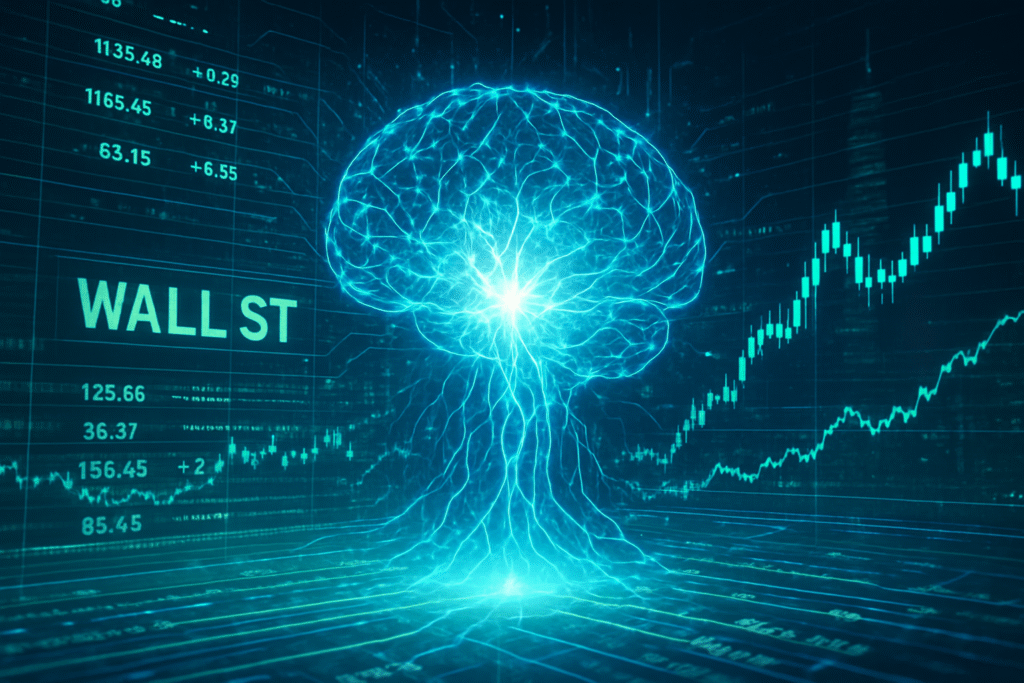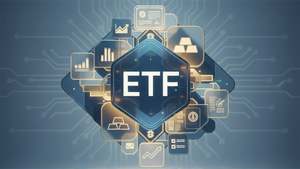
Wall Street is experiencing an unprecedented surge in trading activity, with Artificial Intelligence (AI) systems now fueling a staggering 1.2 trillion-message daily volume, a figure recently disclosed by the president of the New York Stock Exchange (NYSE: ICE). This monumental increase in electronic communications—comprising orders, cancellations, and quotes—underscores the profound and rapidly accelerating impact of AI on global financial markets. The announcement serves as a stark indicator of a new era of hyper-automated, data-intensive trading, bringing with it both unparalleled efficiency and a complex array of challenges for market infrastructure and regulatory oversight.
The sheer scale of this message surge highlights the intensified algorithmic activity dominating modern finance. AI-driven systems are now operating at speeds and volumes previously unimaginable, constantly analyzing vast datasets, identifying intricate patterns, and executing trades with a precision and rapidity that human traders simply cannot match. This development is not merely an incremental change but a fundamental shift in how financial markets operate, demanding robust infrastructure capable of processing an extraordinary flow of information without bottlenecks or delays.
The Algorithmic Engine: Unpacking the Technical Underpinnings of the Surge
The 1.2 trillion-message surge is a direct consequence of advanced AI and machine learning (ML) algorithms being deployed across various trading strategies. These sophisticated systems go far beyond traditional algorithmic trading, which primarily focused on executing large orders efficiently or exploiting simple arbitrage opportunities. Today's AI-powered trading leverages deep learning, reinforcement learning, and natural language processing (NLP) to achieve unprecedented levels of market analysis and execution.
Technically, these AI systems are designed to process and synthesize enormous quantities of real-time data, including historical price action, currency valuations, macroeconomic indicators, news sentiment from various sources, social media trends, and even satellite imagery or supply chain data. Through continuous learning and adaptive models, they can identify optimal entry and exit points, dynamically adjust stop-loss thresholds, and manage risk with a granularity that was previously impossible. This differs significantly from older approaches, which relied on pre-programmed rules or simpler statistical models that lacked the capacity for self-improvement and complex pattern recognition. The ability of AI to make split-second decisions and execute thousands of trades per second is critical in high-frequency trading (HFT) and other latency-sensitive strategies, contributing massively to the message volume. Initial reactions from the AI research community acknowledge the impressive scale but also raise questions about model transparency and the potential for emergent market behaviors. Industry experts, while recognizing the efficiency gains, are also scrutinizing the systemic risks introduced by such pervasive automation.
Corporate Beneficiaries and the Shifting Competitive Landscape
The explosion of AI-driven trading has significant implications for a wide array of companies, from established tech giants to specialized AI startups and traditional financial institutions. Companies that stand to benefit most are those developing cutting-edge AI and machine learning platforms, high-performance computing infrastructure, and ultra-low-latency network solutions. Chipmakers like NVIDIA (NASDAQ: NVDA) and AMD (NASDAQ: AMD), whose GPUs are essential for training complex AI models, are seeing increased demand from financial firms. Cloud providers such as Amazon (NASDAQ: AMZN) Web Services, Microsoft (NASDAQ: MSFT) Azure, and Google (NASDAQ: GOOGL) Cloud are also critical, offering the scalable computing power and data storage necessary to run these extensive AI operations.
Within the financial sector, quantitative hedge funds and proprietary trading firms with significant investments in AI research and development are gaining a distinct competitive edge. These firms are leveraging AI to optimize portfolios, enhance risk management, and generate alpha with greater consistency. Traditional investment banks and asset managers are also rapidly integrating AI, either by building in-house capabilities or partnering with AI solution providers, to avoid being left behind. The competitive landscape is intensifying, as firms race to deploy the most sophisticated AI models, leading to a potential disruption of existing products and services. Companies that fail to adapt risk losing market share to more agile, AI-driven competitors. Market positioning is increasingly defined by a firm's AI prowess, turning AI capabilities into a strategic advantage that dictates success in the modern financial arena.
Broader Implications: Market Stability, Regulatory Scrutiny, and the Future of Finance
The 1.2 trillion-message trading surge driven by AI fits into a broader trend of increasing automation and data-driven decision-making across all sectors, but its impact on financial markets is particularly profound. While AI enhances efficiency and liquidity, it also introduces significant potential concerns, especially regarding market stability and systemic risk. The opaque nature of AI decision-making processes, often referred to as the "black box" problem, makes it challenging to understand why an algorithm makes certain trades, potentially leading to unforeseen market dislocations.
The speed and scale of AI-driven market movements could amplify volatility, as rapid, automated reactions to market events or even erroneous signals could trigger cascading effects. Past incidents, where aggressive algorithms contributed to "flash crashes," serve as cautionary tales. This scenario contrasts sharply with previous AI milestones, where the focus was often on improving specific tasks rather than orchestrating an entire market ecosystem. Regulators, including the U.S. Securities and Exchange Commission (SEC), are increasingly scrutinizing AI and algorithmic trading, exploring new rules and disclosures to mitigate these risks. The concern is not just about individual firm failures but about the potential for widespread market instability if multiple AI systems react in similar, unexpected ways. This concentration risk, where a significant portion of market movements is driven by a few dominant AI technologies or firms, is a growing area of focus for policymakers.
The Road Ahead: Anticipating Future AI Developments in Finance
Looking ahead, the evolution of AI in financial trading is expected to accelerate, leading to even more sophisticated applications and a deeper integration into market infrastructure. Near-term developments will likely focus on enhancing the explainability and interpretability of AI models, addressing the "black box" problem to foster greater trust and regulatory compliance. We can anticipate significant advancements in multi-agent AI systems, where different AI models collaborate and compete, potentially leading to more complex and adaptive market behaviors.
On the horizon, potential applications include AI-driven generative models that can simulate market conditions for stress testing and scenario analysis, as well as advanced predictive analytics that incorporate an even wider array of alternative data sources. AI is also expected to play a larger role in personalized financial advice, automated compliance, and real-time fraud detection, moving beyond just trading. However, significant challenges remain, including data privacy and security, the ethical implications of autonomous trading, and the continuous need for robust, low-latency infrastructure. Experts predict a future where human oversight evolves from direct trading to managing and calibrating sophisticated AI systems, with a greater emphasis on risk governance and ethical AI development. The arms race in AI capabilities among financial institutions will continue, pushing the boundaries of what is technologically possible.
A New Frontier: Assessing AI's Transformative Impact on Wall Street
The 1.2 trillion-message trading surge fueled by AI is a defining moment in the history of financial markets and artificial intelligence. It underscores several key takeaways: the unparalleled efficiency and speed AI brings to trading, the immense demands placed on technological infrastructure, and the emergent complexities regarding market stability and regulatory oversight. This development marks a significant milestone, moving AI from a supportive role to a central, driving force in daily market operations.
The long-term impact will likely involve a complete reshaping of financial institutions, with a premium placed on firms capable of harnessing and responsibly managing advanced AI. While the benefits in terms of efficiency and potential returns are clear, the challenges of ensuring market fairness, preventing systemic risks, and maintaining regulatory control in an increasingly automated landscape are paramount. In the coming weeks and months, market participants and regulators will be closely watching for further data on market volatility, new regulatory proposals addressing AI in finance, and how financial institutions continue to adapt their strategies and infrastructure to this new, hyper-automated reality. The era of AI-driven finance has truly arrived, and its full implications are only just beginning to unfold.
This content is intended for informational purposes only and represents analysis of current AI developments.
TokenRing AI delivers enterprise-grade solutions for multi-agent AI workflow orchestration, AI-powered development tools, and seamless remote collaboration platforms.
For more information, visit https://www.tokenring.ai/.






